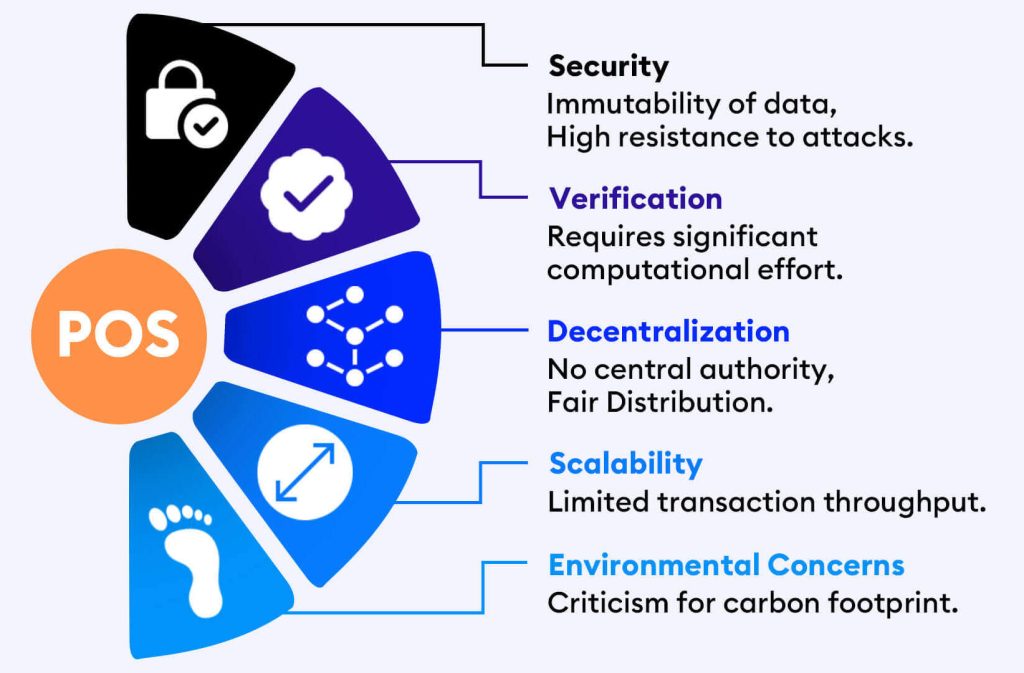You may have heard the term “proof of work” in relation to cryptocurrencies like Bitcoin. Proof of work(POW) is a system that verifies transactions on a blockchain network. It’s an essential part of the network’s security and is used to prevent fraud. Blockchain Consensus is a type of consensus algorithm that is used in blockchain networks to reach an agreement. Proof of work is the most popular and well-known consensus algorithm. It was first introduced by Bitcoin, requiring nodes in the network to solve a complex mathematical puzzle to create a block.
In this post, we’ll break down what proof of work is and how it works, so you can understand the basics of this critical system.
What Is Proof of Work?
The blockchain consensus algorithm is a distributed and trustless system, which is the basis of all cryptocurrencies. Blockchain was created to solve the problem of double-spending. Bitcoin solved this problem with a Proof of Work (PoW) consensus protocol in which miners compete to complete an arbitrary computing task that requires significant computational power. A miner who solves the problem first will be rewarded for their work in Bitcoin. This process incentivizes miners to participate in the network and validate transactions by solving arbitrary computing tasks, called hashes until one miner gets lucky enough to solve it and claim their prize. The more powerful your hardware, the faster you can hash data, and the more likely you will be rewarded with cryptocurrency for your efforts. 1

How Does POW Help Secure the Blockchain?
It ensures that miners do their jobs correctly and that no one is trying to game the system. Furthermore, having miners solve a complex mathematical problem makes it prohibitively expensive for someone to try and hack the blockchain. This is because they need to solve the problem faster than the other miners to overtake the blockchain and create fraudulent transactions. It means that the attacker has to create a new block in the network; it is practically impossible for a miner to acquire more hashing power than the other miners combined.
What Are the Benefits of POW?
Proof of work provides a way to ensure that transactions are valid. It does this by ensuring that the person who wants to make a transaction has enough investment in the network. The blockchain consensus process also helps maintain transparency and security for all parties involved in the transaction. It also helps to prevent spam attacks on the network, as it’s prohibitively expensive to spam the network with bogus transactions. This prevents people from tampering with or reversing transactions, which would damage the credibility of the cryptocurrency. 1
- What Is a 51% Attack?
Let’s say that you’re new to cryptocurrency and want to know what all the fuss is about. You’ve heard about a 51% attack and are still determining what it is. A 51% attack is a potential vulnerability allowing an attacker to control over half of a blockchain network’s mining power. This would enable them to falsify transactions, prevent new blocks from being created, or even reverse transactions that have already been confirmed. As you can see, a 51% attack is a severe threat, and it’s essential to know how to protect your cryptocurrency from this attack.
- How to Prevent a 51% Attack?
So, you’ve learned all about proof of work and how it’s used to secure Bitcoin and other cryptocurrencies. But can anything be done to prevent a 51% attack? The short answer is yes and no. As we’ve seen, achieving a 51% majority on a blockchain network is challenging, but it is not impossible. However, there are certain actions that can be taken to make it less likely. For example, you can increase the number of miners on your network or use algorithms that are less susceptible to attack. At the end of the day, however, there is always some risk of a 51% attack. But as long as you know the risks and take the necessary precautions, you can rest assured that your cryptocurrency is safe and secure.
What Are The Common Misconceptions About Proof of Work?
There are a few common misconceptions that we want to clarify about proof of work. The first is that proof of work is only used for cryptocurrency. While proof of work is the foundation of Bitcoin and other cryptocurrencies, it can also be used for different applications. Another misconception is that proof of work is slow and inefficient. This may have been true in the early days of Bitcoin, but new technologies are constantly being developed that make proof of work faster and more efficient.
What Challenges Does Proof of Work Face?
While proof of work is a great way to secure a network and prevent malicious acts, it does have some challenges. One of the main issues is that it requires a lot of computational power, which can be expensive and challenging to acquire. As a result, only those with enough resources can participate in the verification process, leading to the centralization of power. Proof of work is also energy-intensive; this energy usage will only increase as blockchain technology grows. Some experts are concerned that this could lead to widespread power shortages as the demand for blockchain verification increases. 2
Where Can I Learn More About POW?
Plenty of resources are available if you want to learn more about proof of work. An excellent place to start is with the Bitcoin Wiki, which contains a comprehensive list of articles on proof of work and related topics. You can also find detailed information on the Proof of Work website and some helpful videos on YouTube. If you’re looking for a more interactive learning experience, you might want to check out one of the many online courses available on this topic. Udemy, for example, offers a course called “Blockchain Technology: The Beginner’s Guide to Understanding Bitcoin, Cryptocurrencies, and Ethereum.” And if you’re interested in learning about proof of work specifically in the context of Ethereum, there’s a course called “Ethereum Mining: The Complete Guide.”
Conclusion of POW
Proof of work is an essential concept in cryptocurrency and blockchain technology. In this article, we’ve explained what proof of work is and how it works. We’ve also given a few examples to help you understand the concept. Hopefully, this has helped you better understand this critical aspect of cryptocurrency and blockchain technology.
- Investopedia: https://www.investopedia.com/terms/p/proof-work.asp[↩][↩]
- Wikepedia: https://en.wikipedia.org/wiki/Proof_of_work[↩]


